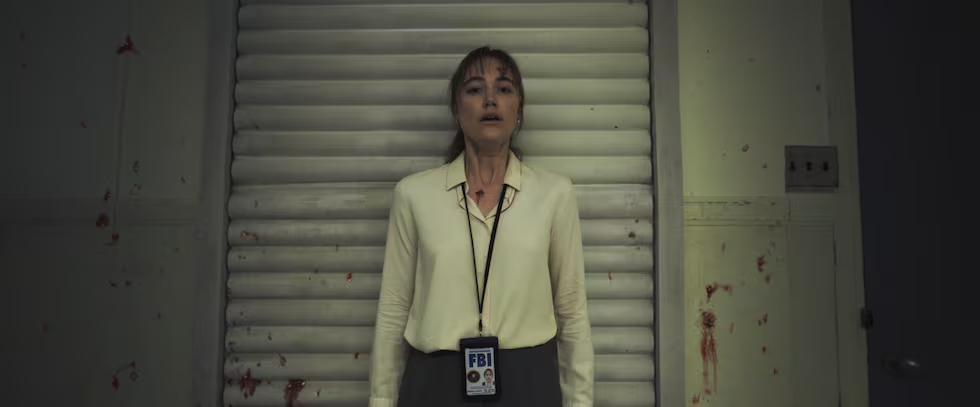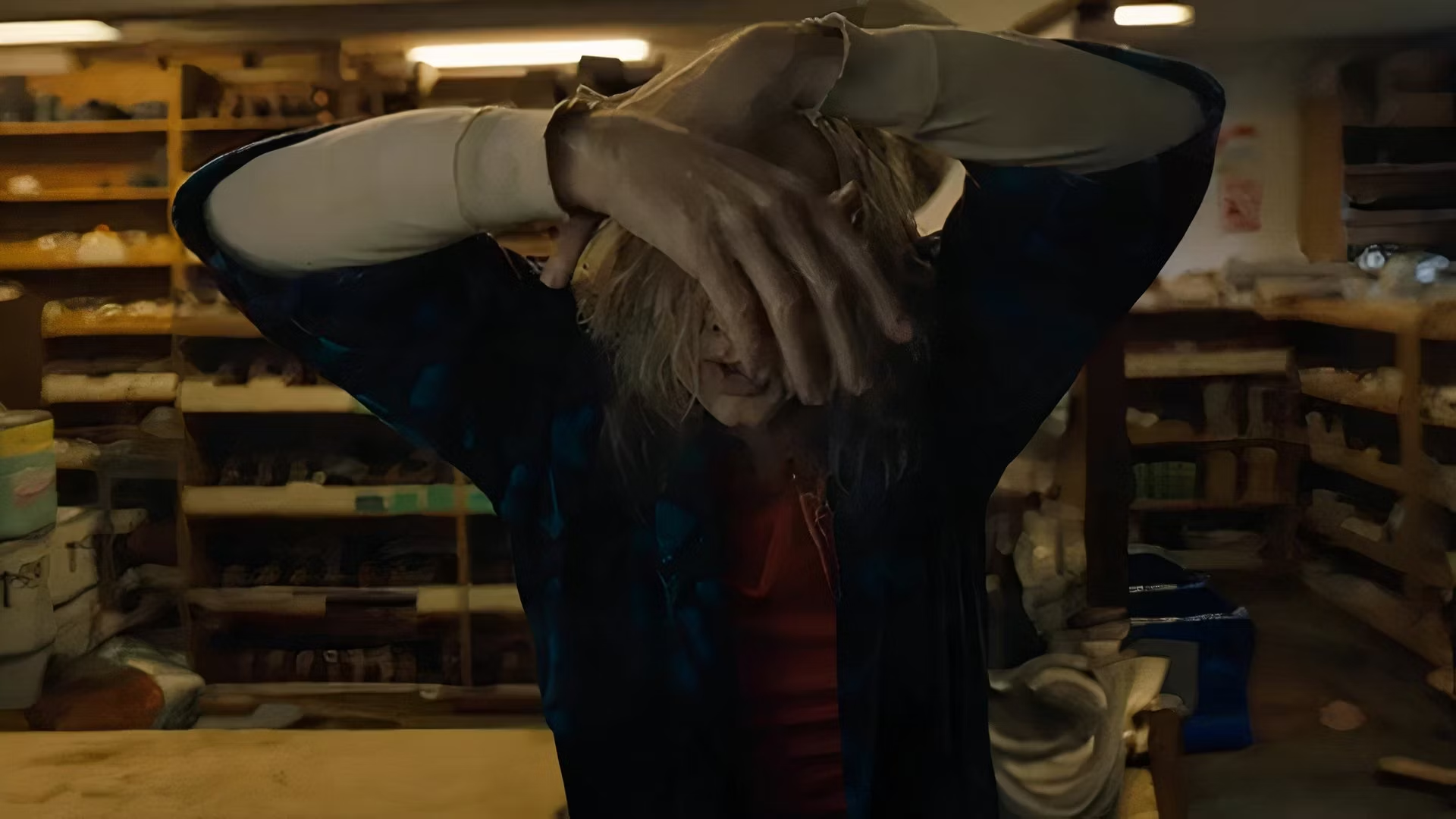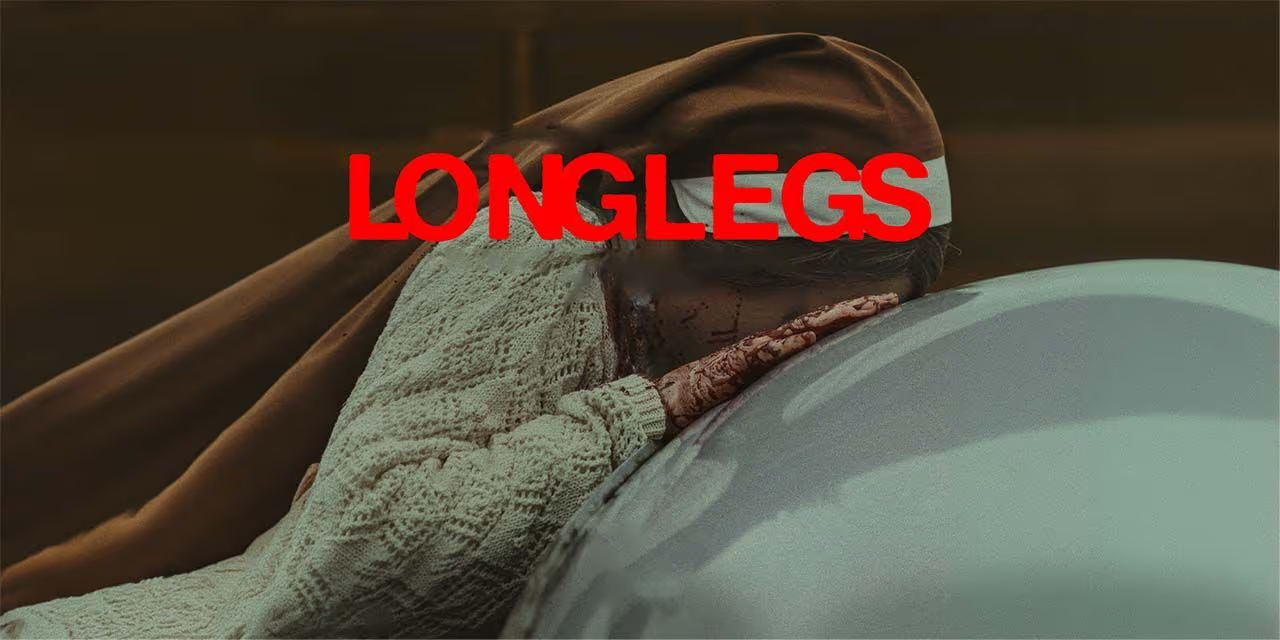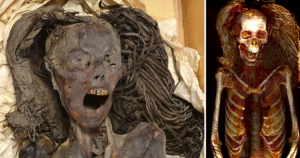The latest thriller from Osgood Perkins, “Longlegs,” introduces us to FBI Agent Lee Harker (Maika Monroe), who is known among her colleagues for her uncanny intuition. Though she prefers solitude in her isolated cabin, Harker’s intermittent psychic abilities make her an invaluable asset in crime scene analysis.
Her skills catch the attention of the sociable Agent Carter (Blair Underwood), who recruits her to tackle a perplexing cold case. Carter, ever the optimist with a fondness for whisky, believes that even Harker’s sporadic insights might revive the stalled investigation.
The Rise of Longlegs
Harker’s involvement, however, draws out the elusive Longlegs (Nicolas Cage), a grotesque figure obsessed with glam rock and implicated in a string of mass murders spanning decades.
This sets the stage for Perkins’ grimly atmospheric film, which some have ambitiously compared to classics like “The Silence of the Lambs” and “Seven.” While these comparisons may be flattering, “Longlegs” stands on its own merits, though it does fall short of its illustrious predecessors.
Stellar Performances

Monroe’s portrayal of Harker is one of the film’s standout features. Known for her roles in “It Follows” and “Watcher,” Monroe delivers a compelling performance as the standoffish yet highly focused agent.
Harker is most comfortable when delving into the twisted minds of serial killers, a trait that makes her both fascinating and unsettling.
Her dedication pays off when she deciphers the killer’s coded messages, revealing a pattern that forms an inverted triangle—a symbol steeped in occult significance.
Visual and Atmospheric Mastery
Perkins’ direction is visually striking, utilizing a recurring motif of obsessive symmetry and shifting aspect ratios to enhance the film’s eerie atmosphere.
The meticulous framing, often creating unsettling angles and triangles, subtly points to the sinister forces at play. This visual approach, combined with a carefully controlled pace, keeps the audience on edge, never quite sure when terror will strike.
Nicolas Cage as Longlegs

Nicolas Cage’s portrayal of Longlegs is another highlight. His character is introduced in a manner that maximizes suspense, first seen from a child’s perspective with only his unnerving voice and mouth visible.
Cage’s performance is both mangled and mesmerizing, making Longlegs a memorable villain. However, the film’s attempt to broaden the peril by introducing secondary antagonists dilutes the impact of Cage’s chilling presence, leading to an anticlimactic final act.
Building Tension Through Sound and Cinematography
Despite its flaws, “Longlegs” offers plenty to admire. Perkins’ ability to create a sense of pervasive dread is evident throughout the film.
The long, static shots, often disrupted by slow, creeping zooms, build a palpable tension. When the camera does move, usually to follow Harker, it signals impending danger, keeping viewers in a state of constant anticipation.
Effective Use of Sound Design
The sound design by Eugenio Battaglia and the score by Zilgi further enhance the film’s unsettling mood. The transition from the mundane to the macabre is seamless, with crisp, tactile audio that becomes increasingly nerve-jangling.
The makeup effects by Werner Pretorius are equally disconcerting, presenting gruesome crime scenes that linger in the mind.
Unpredictable Narrative
Perkins’ storytelling is at its best when it deviates from genre conventions. The unpredictable narrative keeps viewers guessing, a rare feat in horror cinema.
Monroe’s Harker, with her psychic abilities and profound dedication to her work, drives the story forward, making her more involved in the case than she ever anticipated.
As she delves deeper into the mystery, the true horror of Longlegs’ past and his connection to the series of murders becomes apparent.
A Noteworthy Addition to the Genre
In conclusion, “Longlegs” is a compelling addition to the serial killer genre. While it may not reach the heights of the great book to movie adaptations, “The Silence of the Lambs” or “Seven,” it stands out for its atmospheric direction, strong performances, and chilling villain.
Perkins’ meticulous craftsmanship and Monroe’s captivating portrayal of Harker make this film a must-watch for horror enthusiasts. Despite its minor shortcomings, “Longlegs” proves that sometimes, being half-great is better than not great at all.
Perkins’ ability to create a pervasive sense of dread, combined with Monroe’s performance and Cage’s unsettling portrayal of the villain, makes “Longlegs” a standout film in the horror genre.
The movie’s visual and auditory elements work in harmony to keep viewers on edge, while the unpredictable narrative ensures that the audience is constantly engaged. “Longlegs” may not be perfect, but it offers a unique and chilling experience that will resonate with horror fans.






